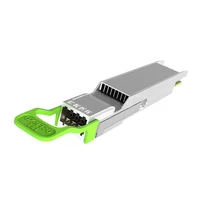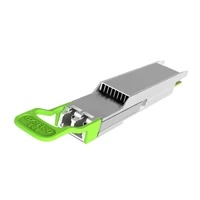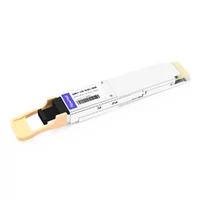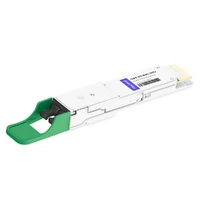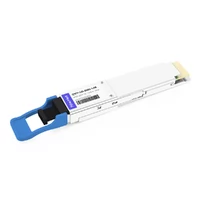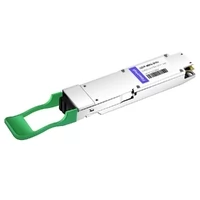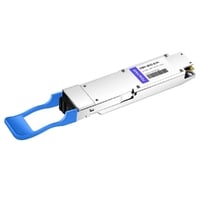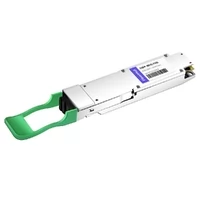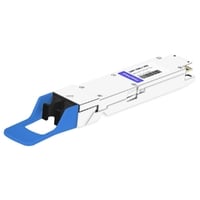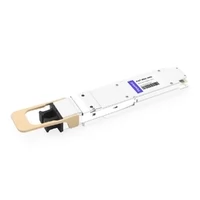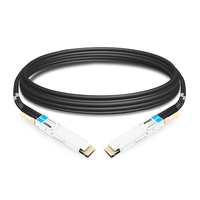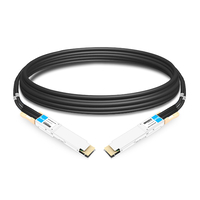We will talk about the development trend of next-generation 1.6T/3.2T optical modules in data centers in the following passage.
The 800G optical module solution for the data center is clear, and most first-line optical module suppliers already had prototypes or small batches of 800G optical module. Next, we need to consider the next-generation optical module solutions.
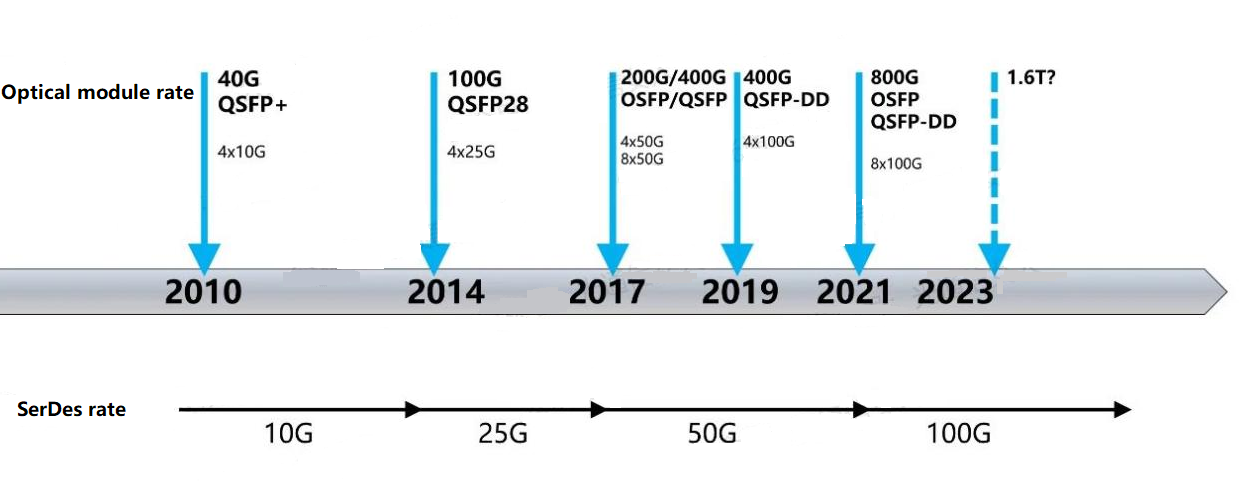
Figure1: Development Trend of Data Center Optical Modules
Table1: Switch scale
| Switching chip capacity | 12.8T | 25.6T | 51.2T | 102.4T |
|---|---|---|---|---|
| Switching capacity | 32×400G | 32×800G | 32×1.6T | 32×3.2T |
| Channel x rate | 128×100G | 128×200G | 128×400G | 128×800G |
| Optical module | 400G | 800G | 1.6T | 3.2T |
| Timeline | 2019 | 2022 | 2025 | 2028? |
For high-speed optical modules, there are two paths to increase the total conversion rate, one is to increase the number of channels, and the other is to increase the conversion rate of each channel. They are commonly known as channel generation and rate generation.
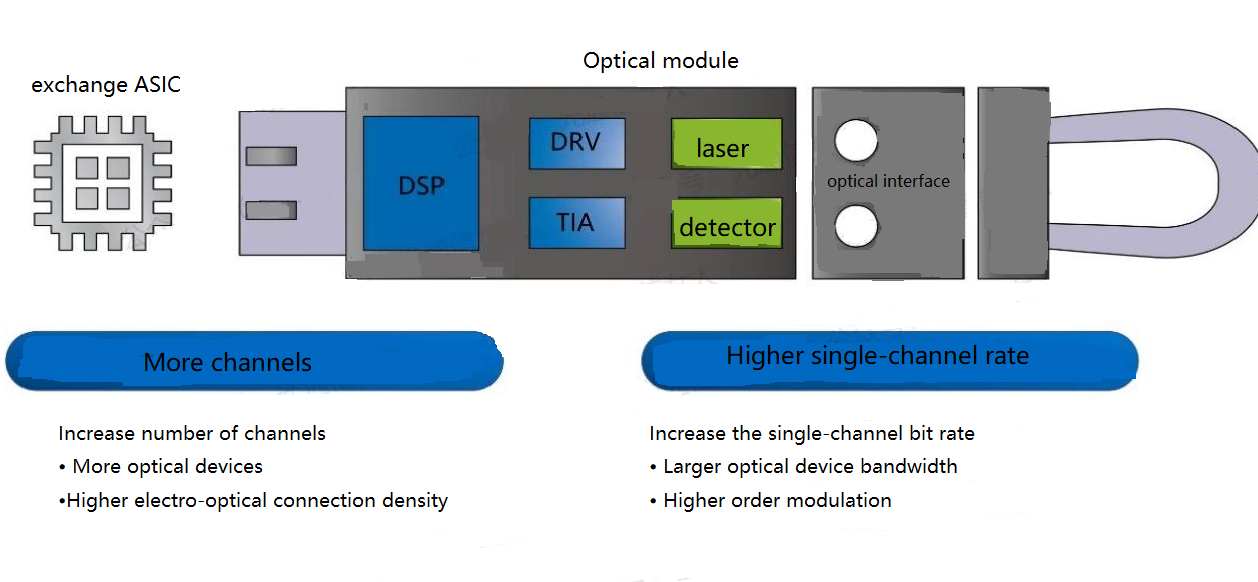
Two ways to increase the speed of optical modules
To increase the number of channels, there is no need to increase the bandwidth or modulation complexity, so it is technically easy to implement. However, in terms of the whole process, we have to consider how to accommodate more optical devices, how to perform multi-channel optical channel interfaces in limited space, and take into account electrical channel connections, density and power consumption.
To increase the single-channel rate, we need to use optical and electrical devices with larger bandwidths on the basis of the original number of channels or use more complex modulation formats.
More specifically, it is difficult to increase the number of channels, with insufficient space and high-density packaging. Some manufacturers have demonstrated 1.6T optical modules based on OSFP-XD.
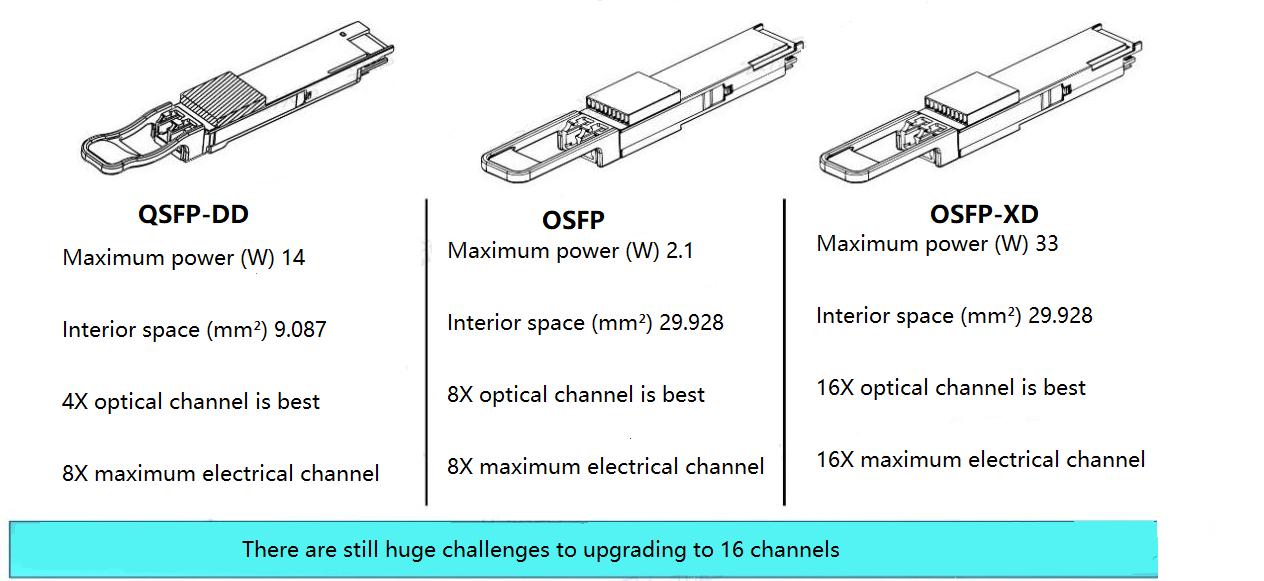
New optical module package supports more parallel channels
To increase the rate of a single channel and to improve the analog bandwidth of optoelectronic devices requires stronger DSP signal processing capabilities, stronger FEC, and higher optical integration.
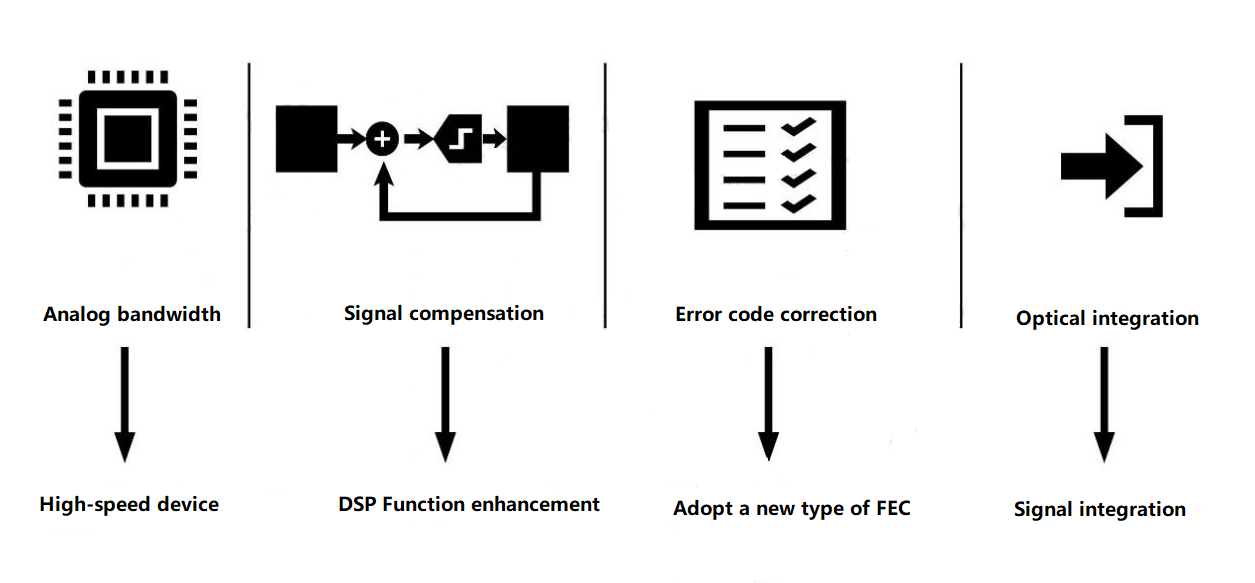
Promotion Path to Higher Rates
Figure2: Optical High Speed for Data Centers
| Bandwidth of a device | Signal processing | |||||
|---|---|---|---|---|---|---|
| CMOS I/O | DRV TIA | Detector | Laser + modulator | Modulation format | FEC | |
| 400G/800G | >28GHz | 30GHz | 30GHz | 30GHz | PAM4 | KP4 bypass |
| 1.6T | >55GHz | >55GHz | >50GHz | >55GHz | PAM4 coherent | stronger FEC |
| 3.2T | >60GHz | 80-90 GHz | >50GHz | >80GHz | PAM4/6 coherent | stronger FEC |
FiberMall believes that the technical route for 1.6T optical modules is basically clear, and the industry chain is currently growing. It will have industrialization capabilities in 2024. On the basis of 800G optical modules, there are three technical solutions that can be realized.

Alternative Implementation Ways of 1.6T Optical Transceiver
However, the technical route of 3.2T is still unclear, and a process of technical optimization is in need.
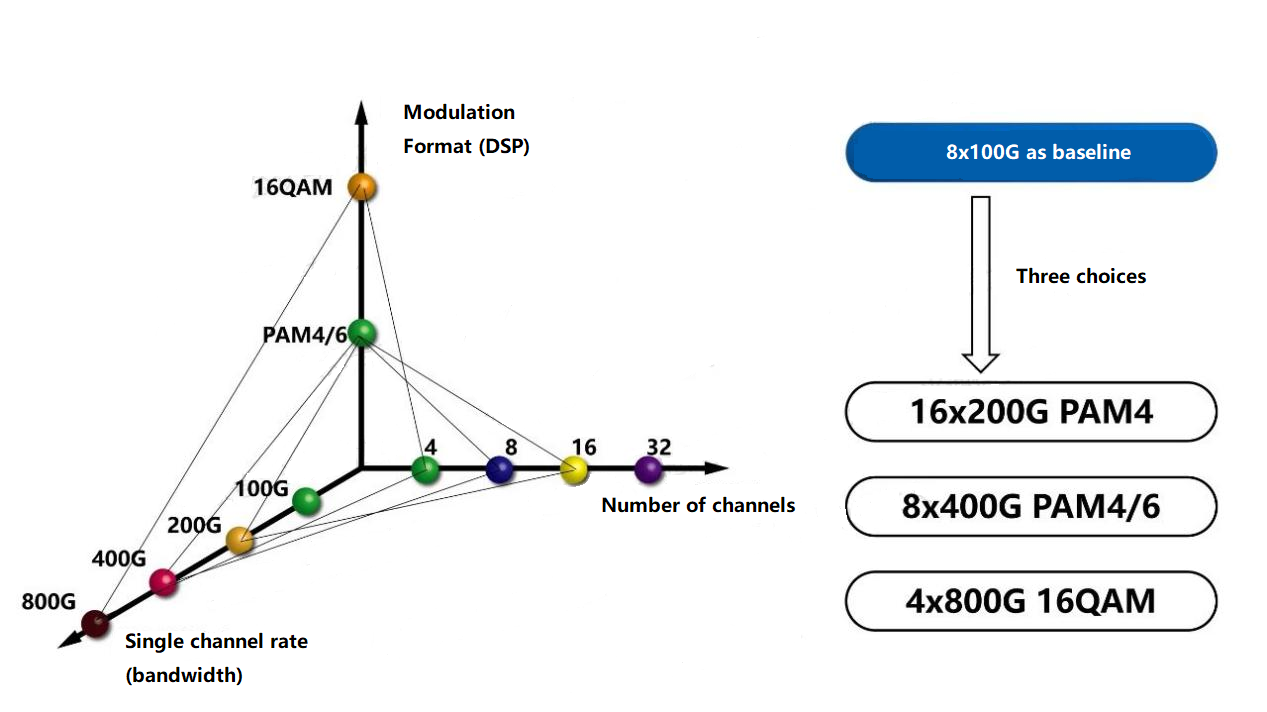
Alternative Implementation Ways of 3.2T Optical Transceiver
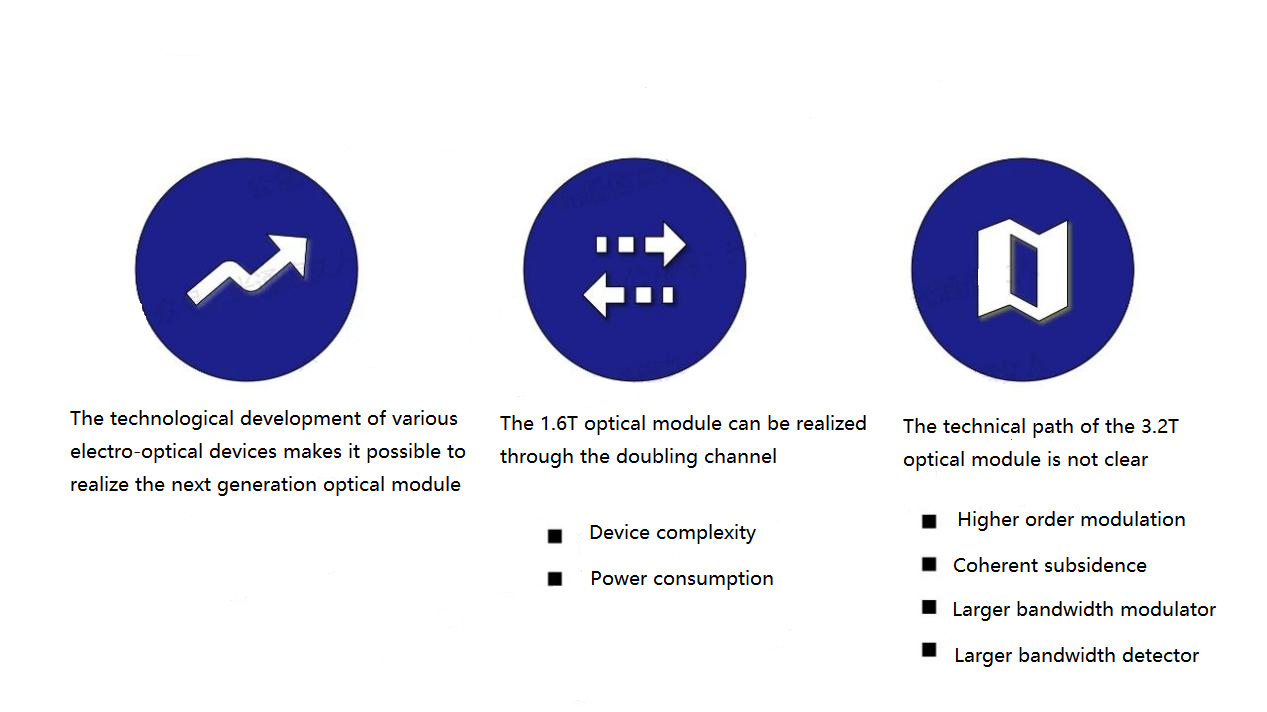
1.6T/3.2T Optical Module Trend
Related Products:
-
 NVIDIA MMA4Z00-NS Compatible 800Gb/s Twin-port OSFP 2x400G SR8 PAM4 850nm 100m DOM Dual MPO-12 MMF Optical Transceiver Module
$650.00
NVIDIA MMA4Z00-NS Compatible 800Gb/s Twin-port OSFP 2x400G SR8 PAM4 850nm 100m DOM Dual MPO-12 MMF Optical Transceiver Module
$650.00
-
 NVIDIA MMS4X00-NM-FLT Compatible 800G Twin-port OSFP 2x400G Flat Top PAM4 1310nm 500m DOM Dual MTP/MPO-12 SMF Optical Transceiver Module
$1199.00
NVIDIA MMS4X00-NM-FLT Compatible 800G Twin-port OSFP 2x400G Flat Top PAM4 1310nm 500m DOM Dual MTP/MPO-12 SMF Optical Transceiver Module
$1199.00
-
 NVIDIA MMA4Z00-NS-FLT Compatible 800Gb/s Twin-port OSFP 2x400G SR8 PAM4 850nm 100m DOM Dual MPO-12 MMF Optical Transceiver Module
$650.00
NVIDIA MMA4Z00-NS-FLT Compatible 800Gb/s Twin-port OSFP 2x400G SR8 PAM4 850nm 100m DOM Dual MPO-12 MMF Optical Transceiver Module
$650.00
-
 OSFP-XD-1.6T-4FR2 1.6T OSFP-XD 4xFR2 PAM4 1291/1311nm 2km SN SMF Optical Transceiver Module
$15000.00
OSFP-XD-1.6T-4FR2 1.6T OSFP-XD 4xFR2 PAM4 1291/1311nm 2km SN SMF Optical Transceiver Module
$15000.00
-
 OSFP-XD-1.6T-2FR4 1.6T OSFP-XD 2xFR4 PAM4 2x CWDM4 2km Dual Duplex LC SMF Optical Transceiver Module
$20000.00
OSFP-XD-1.6T-2FR4 1.6T OSFP-XD 2xFR4 PAM4 2x CWDM4 2km Dual Duplex LC SMF Optical Transceiver Module
$20000.00
-
 OSFP-XD-1.6T-DR8 1.6T OSFP-XD DR8 PAM4 1311nm 2km MPO-16 SMF Optical Transceiver Module
$12000.00
OSFP-XD-1.6T-DR8 1.6T OSFP-XD DR8 PAM4 1311nm 2km MPO-16 SMF Optical Transceiver Module
$12000.00
-
 QSFP-DD-800G-SR8 800G SR8 QSFP-DD 850nm 100m OM4 MMF MPO-16 Optical Transceiver Module
$850.00
QSFP-DD-800G-SR8 800G SR8 QSFP-DD 850nm 100m OM4 MMF MPO-16 Optical Transceiver Module
$850.00
-
 QSFP-DD-800G-DR8 800G-DR8 QSFP-DD PAM4 1310nm 500m DOM MTP/MPO-16 SMF Optical Transceiver Module
$1300.00
QSFP-DD-800G-DR8 800G-DR8 QSFP-DD PAM4 1310nm 500m DOM MTP/MPO-16 SMF Optical Transceiver Module
$1300.00
-
 QSFP-DD-800G-2FR4 800G QSFP-DD 2FR4 PAM4 1310nm 2km DOM Dual CS SMF Optical Transceiver Module
$1900.00
QSFP-DD-800G-2FR4 800G QSFP-DD 2FR4 PAM4 1310nm 2km DOM Dual CS SMF Optical Transceiver Module
$1900.00
-
 QSFP-DD-800G-LR8 QSFP-DD 8x100G LR PAM4 1310nm 10km MPO-16 SMF FEC Optical Transceiver Module
$1600.00
QSFP-DD-800G-LR8 QSFP-DD 8x100G LR PAM4 1310nm 10km MPO-16 SMF FEC Optical Transceiver Module
$1600.00
-
 QSFP-DD-800G-FR8D QSFP-DD 8x100G FR/DR8+ PAM4 1310nm 2km DOM Dual MPO-12 SMF Optical Transceiver Module
$1450.00
QSFP-DD-800G-FR8D QSFP-DD 8x100G FR/DR8+ PAM4 1310nm 2km DOM Dual MPO-12 SMF Optical Transceiver Module
$1450.00
-
 OSFP-800G-2FR4 OSFP 2x400G FR4 PAM4 CWDM4 2km DOM Dual CS SMF Optical Transceiver Module
$1500.00
OSFP-800G-2FR4 OSFP 2x400G FR4 PAM4 CWDM4 2km DOM Dual CS SMF Optical Transceiver Module
$1500.00
-
 OSFP-800G-2LR4 OSFP 2x400G LR4 PAM4 CWDM4 Dual CS 10km SMF Optical Transceiver Module
$2000.00
OSFP-800G-2LR4 OSFP 2x400G LR4 PAM4 CWDM4 Dual CS 10km SMF Optical Transceiver Module
$2000.00
-
 OSFP-800G-FR8L OSFP 800G FR8 PAM4 CWDM8 Duplex LC 2km SMF Optical Transceiver Module
$3000.00
OSFP-800G-FR8L OSFP 800G FR8 PAM4 CWDM8 Duplex LC 2km SMF Optical Transceiver Module
$3000.00
-
 OSFP-800G-LR8D OSFP 8x100G LR PAM4 1310nm Dual MPO-12 10km SMF Optical Transceiver Module
$1800.00
OSFP-800G-LR8D OSFP 8x100G LR PAM4 1310nm Dual MPO-12 10km SMF Optical Transceiver Module
$1800.00
-
 OSFP-800G-SR8D OSFP 8x100G SR8 PAM4 850nm 100m DOM Dual MPO-12 MMF Optical Transceiver Module
$650.00
OSFP-800G-SR8D OSFP 8x100G SR8 PAM4 850nm 100m DOM Dual MPO-12 MMF Optical Transceiver Module
$650.00
-
 QSFPDD-800G-PC1.5M 1.5m (5ft) 800G QSFP-DD to QSFP-DD QSFP-DD800 PAM4 Passive Direct Attach Cable
$200.00
QSFPDD-800G-PC1.5M 1.5m (5ft) 800G QSFP-DD to QSFP-DD QSFP-DD800 PAM4 Passive Direct Attach Cable
$200.00
-
 QSFPDD-800G-PC1M 1m (3ft) 800G QSFP-DD to QSFP-DD QSFP-DD800 PAM4 Passive Direct Attach Cable
$175.00
QSFPDD-800G-PC1M 1m (3ft) 800G QSFP-DD to QSFP-DD QSFP-DD800 PAM4 Passive Direct Attach Cable
$175.00




